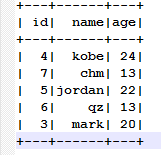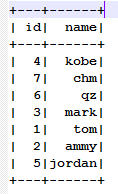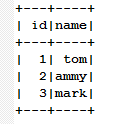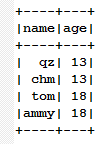Scala Example Code¶
Scenario¶
This section provides Scala example code that demonstrates how to use a Spark job to access data from the GaussDB(DWS) data source.
A datasource connection has been created and bound to a queue on the DLI management console.
Note
Hard-coded or plaintext passwords pose significant security risks. To ensure security, encrypt your passwords, store them in configuration files or environment variables, and decrypt them when needed.
Preparations¶
Constructing dependency information and creating a Spark session
Import dependencies
Involved Maven dependency
<dependency> <groupId>org.apache.spark</groupId> <artifactId>spark-sql_2.11</artifactId> <version>2.3.2</version> </dependency>
Import dependency packages.
import java.util.Properties import org.apache.spark.sql.{Row,SparkSession} import org.apache.spark.sql.SaveMode
Create a session.
val sparkSession = SparkSession.builder().getOrCreate()
Accessing a Data Source Using a SQL API¶
Create a table to connect to a GaussDB(DWS) data source.
sparkSession.sql( "CREATE TABLE IF NOT EXISTS dli_to_dws USING JDBC OPTIONS ( 'url'='jdbc:postgresql://to-dws-1174404209-cA37siB6.datasource.com:8000/postgres', 'dbtable'='customer', 'user'='dbadmin', 'passwdauth'='######'// Name of the datasource authentication of the password type created on DLI. If datasource authentication is used, you do not need to set the username and password for the job. )" )
Table 1 Parameters for creating a table¶ Parameter
Description
url
To obtain a GaussDB(DWS) IP address, you need to create a datasource connection first. Refer to Data Lake Insight User Guide for more information.
After an enhanced datasource connection is created, you can use the JDBC connection string (intranet) provided by GaussDB(DWS) or the intranet IP address and port number to connect to GaussDB(DWS). The format is protocol header://internal IP address:internal network port number/database name, for example: jdbc:postgresql://192.168.0.77:8000/postgres. For details about how to obtain the value, see GaussDB(DWS) cluster information.
Note
The GaussDB(DWS) IP address is in the following format: protocol header://IP address:port number/database name
Example:
jdbc:postgresql://to-dws-1174405119-ihlUr78j.datasource.com:8000/postgres
If you want to connect to a database created in GaussDB(DWS), change postgres to the corresponding database name in this connection.
passwdauth
Name of datasource authentication of the password type created on DLI. If datasource authentication is used, you do not need to set the username and password for jobs.
dbtable
Tables in the PostgreSQL database.
partitionColumn
This parameter is used to set the numeric field used concurrently when data is read.
Note
The partitionColumn, lowerBound, upperBound, and numPartitions parameters must be set at the same time.
To improve the concurrent read performance, you are advised to use auto-increment columns.
lowerBound
Minimum value of a column specified by partitionColumn. The value is contained in the returned result.
upperBound
Maximum value of a column specified by partitionColumn. The value is not contained in the returned result.
numPartitions
Number of concurrent read operations.
Note
When data is read, lowerBound and upperBound are evenly allocated to each task to obtain data. Example:
'partitionColumn'='id',
'lowerBound'='0',
'upperBound'='100',
'numPartitions'='2'
Two concurrent tasks are started in DLI. The execution ID of one task is greater than or equal to 0 and the ID is less than 50, and the execution ID of the other task is greater than or equal to 50 and the ID is less than 100.
fetchsize
Number of data records obtained in each batch during data reading. The default value is 1000. If this parameter is set to a large value, the performance is good but more memory is occupied. If this parameter is set to a large value, memory overflow may occur.
batchsize
Number of data records written in each batch. The default value is 1000. If this parameter is set to a large value, the performance is good but more memory is occupied. If this parameter is set to a large value, memory overflow may occur.
truncate
Indicates whether to clear the table without deleting the original table when overwrite is executed. The options are as follows:
true
false
The default value is false, indicating that the original table is deleted and then a new table is created when the overwrite operation is performed.
isolationLevel
Transaction isolation level. The options are as follows:
NONE
READ_UNCOMMITTED
READ_COMMITTED
REPEATABLE_READ
SERIALIZABLE
The default value is READ_UNCOMMITTED.
Insert data
sparkSession.sql("insert into dli_to_dws values(1, 'John',24),(2, 'Bob',32)")
Query data
val dataFrame = sparkSession.sql("select * from dli_to_dws") dataFrame.show()
Before data is inserted:

Response:
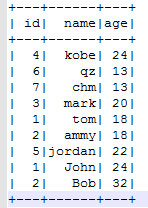
Delete the datasource connection table.
sparkSession.sql("drop table dli_to_dws")
Accessing a Data Source Using a DataFrame API¶
Set connection parameters.
val url = "jdbc:postgresql://to-dws-1174405057-EA1Kgo8H.datasource.com:8000/postgres" val username = "dbadmin" val password = "######" val dbtable = "customer"
Create a DataFrame, add data, and rename fields
var dataFrame_1 = sparkSession.createDataFrame(List((8, "Jack_1", 18))) val df = dataFrame_1.withColumnRenamed("_1", "id") .withColumnRenamed("_2", "name") .withColumnRenamed("_3", "age")
Import data to GaussDB(DWS).
df.write.format("jdbc") .option("url", url) .option("dbtable", dbtable) .option("user", username) .option("password", password) .mode(SaveMode.Append) .save()
Note
The options of SaveMode can be one of the following:
ErrorIfExis: If the data already exists, the system throws an exception.
Overwrite: If the data already exists, the original data will be overwritten.
Append: If the data already exists, the system saves the new data.
Ignore: If the data already exists, no operation is required. This is similar to the SQL statement CREATE TABLE IF NOT EXISTS.
Read data from GaussDB(DWS).
Method 1: read.format()
val jdbcDF = sparkSession.read.format("jdbc") .option("url", url) .option("dbtable", dbtable) .option("user", username) .option("password", password) .load()
Method 2: read.jdbc()
val properties = new Properties() properties.put("user", username) properties.put("password", password) val jdbcDF2 = sparkSession.read.jdbc(url, dbtable, properties)
Before data is inserted:
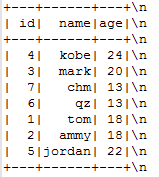
Response:

The dateFrame read by the read.format() or read.jdbc() method is registered as a temporary table. Then, you can use SQL statements to query data.
jdbcDF.registerTempTable("customer_test") sparkSession.sql("select * from customer_test where id = 1").show()
Query results
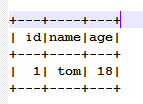
Submitting a Job¶
Generate a JAR file based on the code and upload the file to DLI.
In the Spark job editor, select the corresponding dependency module and execute the Spark job.
Complete Example Code¶
Maven dependency
<dependency> <groupId>org.apache.spark</groupId> <artifactId>spark-sql_2.11</artifactId> <version>2.3.2</version> </dependency>
Connecting to data sources through SQL APIs
Note
Hard-coded or plaintext passwords pose significant security risks. To ensure security, encrypt your passwords, store them in configuration files or environment variables, and decrypt them when needed.
import java.util.Properties import org.apache.spark.sql.SparkSession object Test_SQL_DWS { def main(args: Array[String]): Unit = { // Create a SparkSession session. val sparkSession = SparkSession.builder().getOrCreate() // Create a data table for DLI-associated DWS sparkSession.sql("CREATE TABLE IF NOT EXISTS dli_to_dws USING JDBC OPTIONS ( 'url'='jdbc:postgresql://to-dws-1174405057-EA1Kgo8H.datasource.com:8000/postgres', 'dbtable'='customer', 'user'='dbadmin', 'password'='######')") //*****************************SQL model*********************************** //Insert data into the DLI data table sparkSession.sql("insert into dli_to_dws values(1,'John',24),(2,'Bob',32)") //Read data from DLI data table val dataFrame = sparkSession.sql("select * from dli_to_dws") dataFrame.show() //drop table sparkSession.sql("drop table dli_to_dws") sparkSession.close() } }
Connecting to data sources through DataFrame APIs
Note
Hard-coded or plaintext passwords pose significant security risks. To ensure security, encrypt your passwords, store them in configuration files or environment variables, and decrypt them when needed.
import java.util.Properties import org.apache.spark.sql.SparkSession import org.apache.spark.sql.SaveMode object Test_SQL_DWS { def main(args: Array[String]): Unit = { // Create a SparkSession session. val sparkSession = SparkSession.builder().getOrCreate() //*****************************DataFrame model*********************************** // Set the connection configuration parameters. Contains url, username, password, dbtable. val url = "jdbc:postgresql://to-dws-1174405057-EA1Kgo8H.datasource.com:8000/postgres" val username = "dbadmin" val password = "######" val dbtable = "customer" //Create a DataFrame and initialize the DataFrame data. var dataFrame_1 = sparkSession.createDataFrame(List((1, "Jack", 18))) //Rename the fields set by the createDataFrame() method. val df = dataFrame_1.withColumnRenamed("_1", "id") .withColumnRenamed("_2", "name") .withColumnRenamed("_3", "age") //Write data to the dws_table_1 table df.write.format("jdbc") .option("url", url) .option("dbtable", dbtable) .option("user", username) .option("password", password) .mode(SaveMode.Append) .save() // DataFrame object for data manipulation //Filter users with id=1 var newDF = df.filter("id!=1") newDF.show() // Filter the id column data var newDF_1 = df.drop("id") newDF_1.show() // Read the data of the customer table in the RDS database //Way one: Read data from GaussDB(DWS) using read.format() val jdbcDF = sparkSession.read.format("jdbc") .option("url", url) .option("dbtable", dbtable) .option("user", username) .option("password", password) .option("driver", "org.postgresql.Driver") .load() //Way two: Read data from GaussDB(DWS) using read.jdbc() val properties = new Properties() properties.put("user", username) properties.put("password", password) val jdbcDF2 = sparkSession.read.jdbc(url, dbtable, properties) /** * Register the dateFrame read by read.format() or read.jdbc() as a temporary table, and query the data * using the sql statement. */ jdbcDF.registerTempTable("customer_test") val result = sparkSession.sql("select * from customer_test where id = 1") result.show() sparkSession.close() } }

